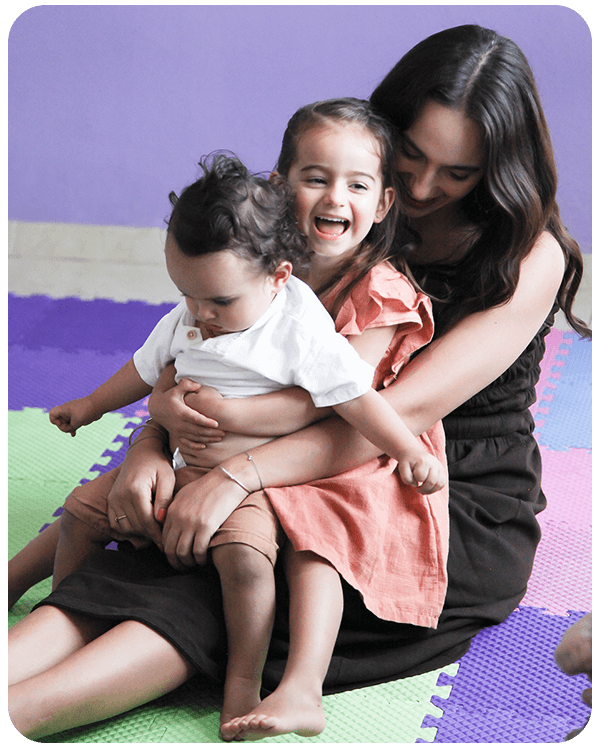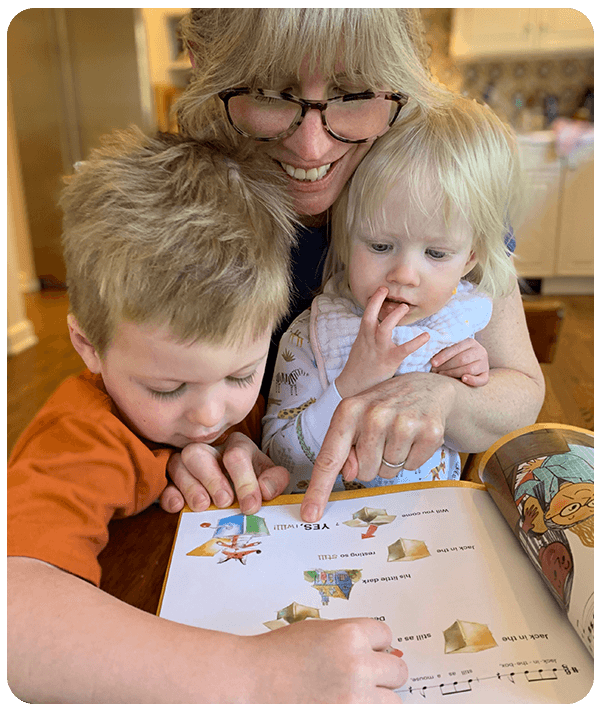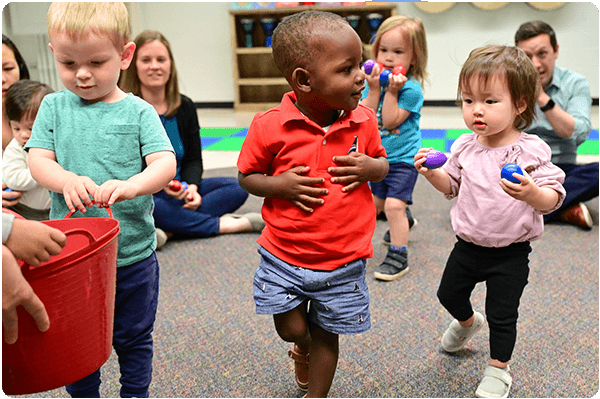Threes and Fours in Music Together® Classes
Between preschool, playdates, and activities, three- and four-year-olds can have super-busy schedules! With so many demands on their (and YOUR) time, we’re sometimes asked whether it makes sense for these not-so-littles to continue their Music Together® classes. As you plan your family’s fall, here are a few answers to your questions that give insights into how music benefits preschoolers and complements their growing curiosity and confidence.


Answer: It sounds like Ollie is well on the way to Basic Music Competence (BMC), and the learning doesn’t stop there! Music, like language, develops over time through continuous exposure and experimentation. By continuing in Music Together® classes, older children with BMC will begin to gain music fluency, which is important for formal music or movement lessons children often want to try in elementary school.

Answer: As adults with fully formed brains and personalities, we may not change that much in three years—but think about how much Luna has grown since they were a baby! The second time through a song collection is often an entirely new experience for a child, since they are in such a different place cognitively, socially, linguistically, physically, emotionally, and musically. Plus, when children already know the songs, thanks to early exposure, they have the opportunity to refine and synthesize their skills and knowledge across multiple developmental domains.
Answer: As you know, Music Together family classes are taught in mixed-age groupings of children from birth through age five, so that all members of a family can learn—and play!—together. As one of the older children in class, Matteo will have more opportunities be a class leader that the younger students can look up to. This builds important life skills: confidence, empathy and social understanding. In fact, regardless of their temperament, children are more likely to take on a leadership role if they are the oldest in a group. Plus, when children of varying ages play and learn together, the environment tends to be more creative, less competitive, and more fun. And, more fun leads to more learning! (Read more about the surprising benefits of mixed-age classes.)


Answer: It’s totally understandable to not want to fill your child’s schedule with too much, especially since they are starting school. Continuing to include Music Together in your preschooler’s weekly routine can provide comfort during the sometimes difficult move from home to school. The familiarity of the music and classroom make it a safe space for your child to get creative and deepen their learning through play and experimentation. Because Music Learning Supports All Learning®, the time they spend in Music Together will enrich what they are learning in preschool. Another benefit? You continue to participate right alongside them, keeping yourself an active part of their music-learning, and deepening family bonds through music-making.
If you have a question about your child’s music development, please email it to news@musictogether.com.



